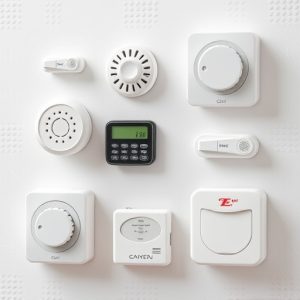Protecting Solos: Rechargeable vs Battery Alarms for Safe Travel
Personal alarms are vital for solo travelers, with rechargeable and battery-powered models offering…….
Personal alarms are vital for solo travelers, with rechargeable and battery-powered models offering distinct advantages. Battery-operated alarms provide immediate protection but require frequent replacements, while rechargeables are eco-friendly and cost-effective for long trips, using replaceable lithium-ion batteries that last hundreds of charges. For short trips or quick setup, battery-powered alarms are suitable, though they contribute to waste. Rechargeables are recommended for solo travel safety due to their environmental friendliness and savings over time, considering factors like multi-activation modes, GPS tracking, durability, and water resistance.
Staying safe while solo traveling is paramount. For enhanced security, consider electronic safety devices, particularly personal alarms—your powerful ally against potential threats. This article breaks down the essentials of these compact yet potent tools. We explore different types, notably Rechargeable Vs Battery Personal Alarms, analyzing their pros and cons to help you choose wisely. Additionally, we guide you on key features to look for and best practices for optimal use and maintenance, ensuring peace of mind during your journeys.
- Understanding Personal Alarms: Types and Benefits for Solo Travelers
- Rechargeable vs Battery-Powered Alarms: Pros and Cons
- Key Features to Consider in Electronic Safety Devices
- Best Practices for Using and Maintaining Your Alarm Device While Traveling Solo
Understanding Personal Alarms: Types and Benefits for Solo Travelers
Personal alarms are a valuable tool for solo travelers, offering a simple yet effective way to deter potential threats and attract attention in emergencies. Understanding the different types available is key to making an informed choice that suits your travel needs. One of the primary distinctions lies in their power source: rechargeable versus battery-powered personal alarms.
Battery-operated alarms are a traditional option known for their reliability, requiring simple replacement or disposal once drained. On the other hand, rechargeable models offer environmental and economic advantages by reducing waste. They typically feature longer durations between charges and are more convenient for frequent travelers. When considering these devices, weight and size also play significant roles, as compact designs facilitate easy portability during travels.
Rechargeable vs Battery-Powered Alarms: Pros and Cons
When it comes to electronic safety devices for solo travelers, choosing between rechargeable and battery-powered alarms offers distinct advantages and considerations. Rechargeable models are a popular choice due to their environmental friendliness and cost-effectiveness in the long run. These alarms often feature eco-friendly lithium-ion batteries that can be recharged hundreds of times, eliminating the need for frequent battery replacements. This not only reduces waste but also saves travelers money over time. Moreover, rechargeable alarms typically offer a longer lifespan, ensuring peace of mind during extended journeys.
On the other hand, battery-powered alarms are convenient for short-term trips or those who prefer instant readiness. Standard batteries can be easily replaced, providing quick protection without the need for charging. While single-use batteries may contribute to waste, they offer immediate peace of mind and are readily available worldwide. Battery-powered alarms are particularly useful for travelers who might forget to recharge devices or encounter charging difficulties during their adventures.
Key Features to Consider in Electronic Safety Devices
When choosing electronic safety devices for solo travel, several key features stand out. First, consider rechargeable versus battery-powered personal alarms. Rechargeable options are environmentally friendly and cost-effective in the long run, eliminating the need for frequent battery replacements. Moreover, they often come with longer durations and customizable settings, allowing you to adapt the alarm’s volume and frequency based on your surroundings.
Additionally, look for devices with multiple activation modes like manual, motion-activated, or sound-triggered alarms. Built-in GPS tracking is another valuable feature that enables you to monitor your location in real time, enhancing safety especially when venturing into unfamiliar territories. Look out for durable construction and water resistance ratings as these ensure reliability during travel, be it on land or sea.
Best Practices for Using and Maintaining Your Alarm Device While Traveling Solo
When traveling solo, ensuring your safety is paramount. One effective tool to consider is a personal alarm device. To get the most out of this device, understand the distinction between rechargeable and battery-powered options. Rechargeable models offer a cost-effective and environmentally friendly choice, as they can be used repeatedly after plugging in for charging. On the other hand, battery-powered alarms are convenient for quick deployment without the need for recharging.
Proper maintenance is key to ensuring your alarm device functions effectively during your travels. Regularly check the battery level or recharge as needed to avoid any unexpected failures. Additionally, familiarize yourself with the various settings and modes of your alarm, enabling you to use it in different scenarios such as personal protection, emergency situations, or deterring potential thieves.
When traveling solo, prioritizing safety is paramount. Incorporating a reliable electronic safety device, whether it’s a rechargeable or battery-powered personal alarm, can provide peace of mind and an extra layer of protection. By understanding the different types, their benefits, and key features, you can choose the best device to suit your needs. Always remember to use and maintain your alarm responsibly for maximum effectiveness during your journeys.


